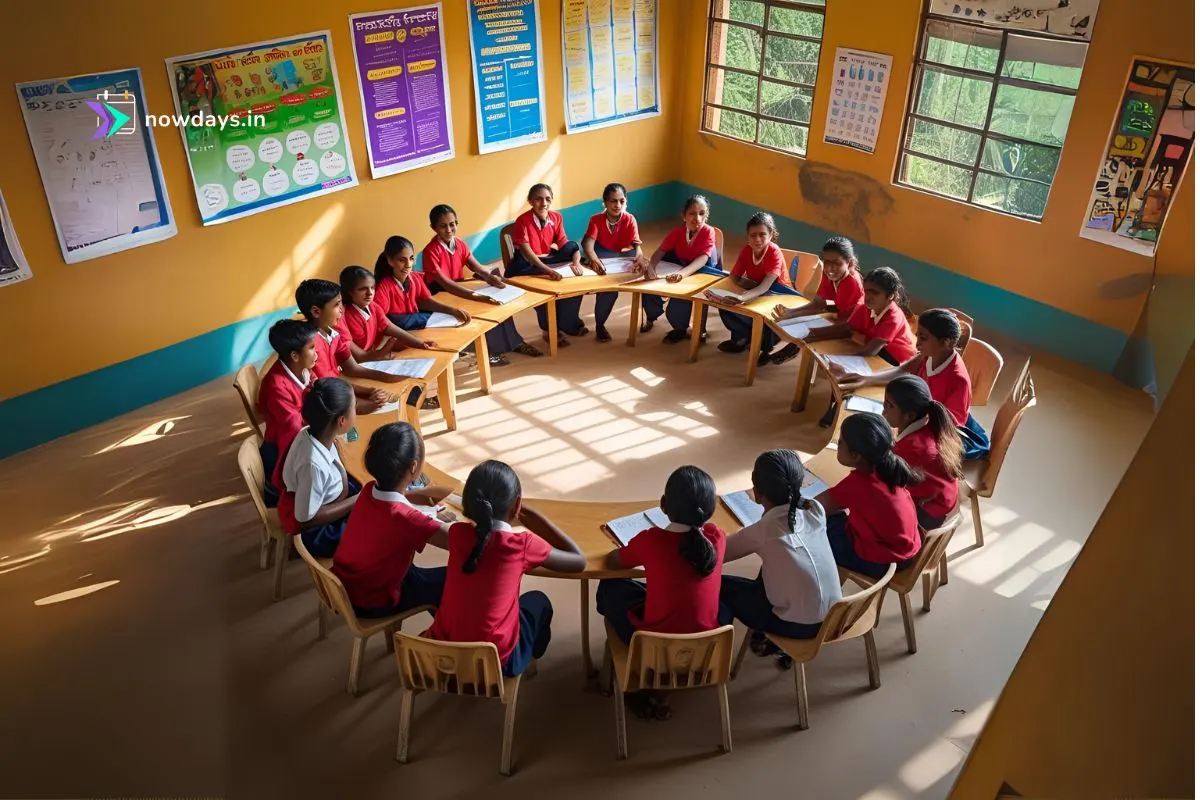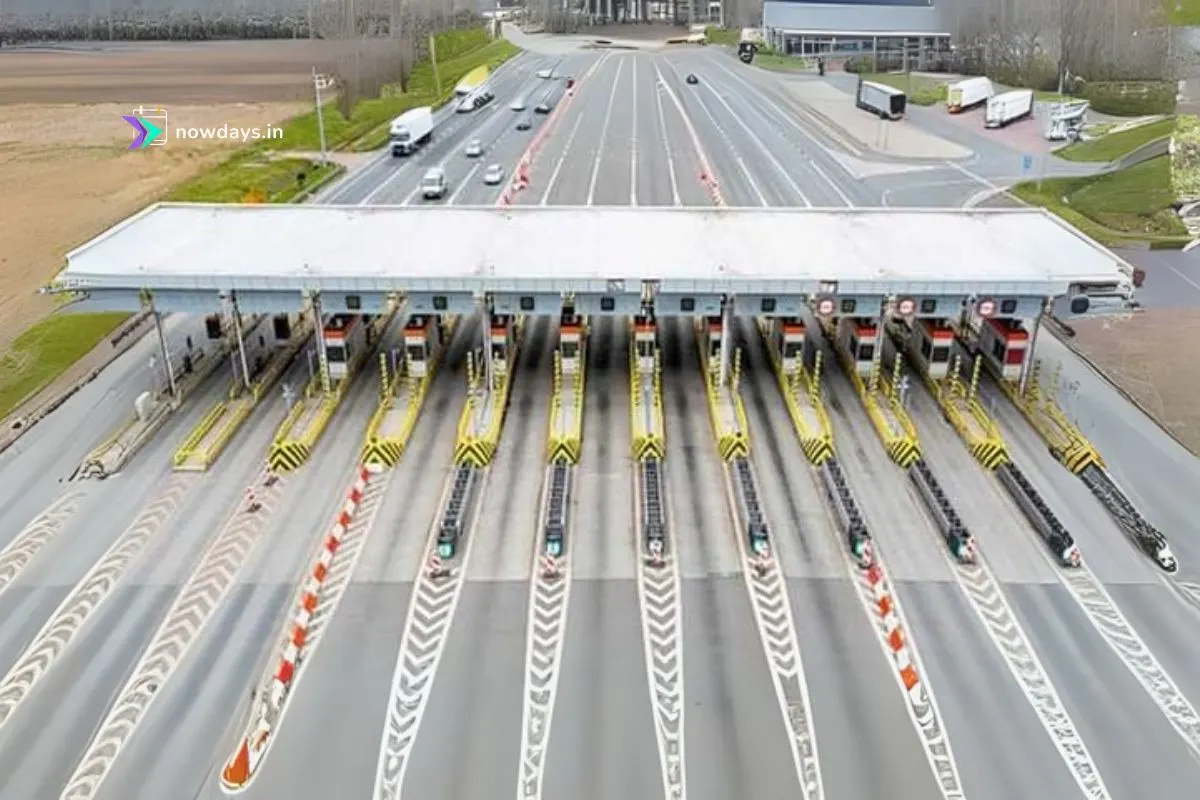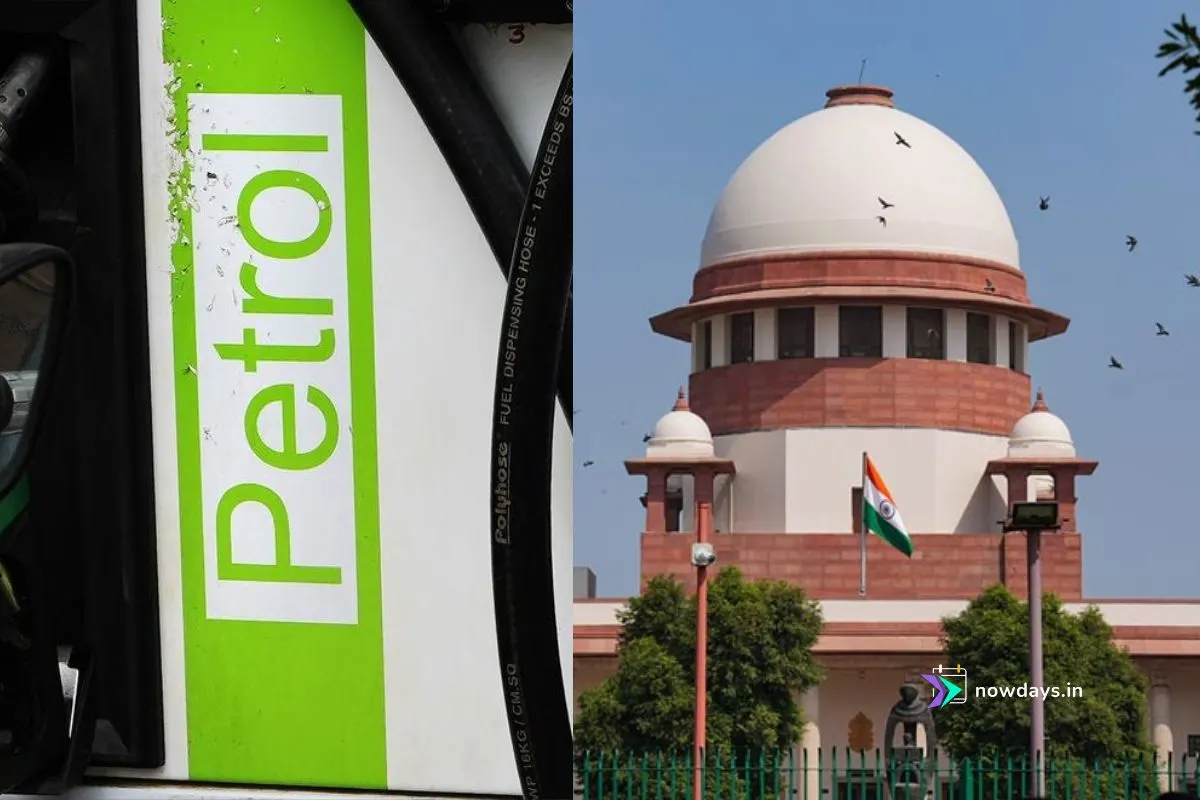- It seems likely that Kerala schools are adopting a new classroom seating model with no backbenchers, inspired by the Malayalam film Sthanarthi Sreekuttan.
- The new model uses a semi-circular or U-shaped arrangement, aiming for inclusivity and equal student engagement.
- Research suggests this change is being implemented in several schools across districts like Kollam, Kannur, Thrissur, and Palakkad, with positive feedback from teachers and students.
- There is some debate, as traditional seating has long been the norm, but the evidence leans toward growing support for this innovative approach.
Kerala schools are moving away from the traditional row-based seating, where students are often labeled as frontbenchers (studious) or backbenchers (sometimes disruptive). The new model, inspired by a recent film, seeks to create a more equitable classroom environment.
Detailed Report on Kerala Schools’ New Classroom Seating Model

Kerala schools are undergoing a transformative shift in classroom seating arrangements, moving away from the conventional row-based system to a more inclusive, student-centered model that eliminates the concept of backbenchers. This change, inspired by the Malayalam film Sthanarthi Sreekuttan, has garnered significant attention and is being implemented across several districts, with promising early results. Below, we explore the details, objectives, implementation, and potential impacts of this innovative approach, drawing from recent reports and observations as of July 11, 2025.
Read more: ₹23 Lakh Isn’t Enough: Why Most Indians May Not Qualify for UAE Golden Visa
Inspiration and Objectives
The initiative draws inspiration from the film Sthanarthi Sreekuttan, directed by Vinesh Viswanath and released on the OTT platform Saina Play. The film’s climax features a classroom scene where the traditional frontbench-backbench hierarchy is dismantled in favor of a semi-circular seating arrangement, symbolizing the breaking down of social and academic barriers. This resonated with educators and policymakers, leading to the adoption of similar layouts in schools.The primary objectives of this new model are:
- To promote inclusivity by ensuring all students, regardless of academic performance or behavior, are equally engaged.
- To foster equal participation, reducing the psychological and physical segregation often associated with traditional seating.
- To dismantle academic and social labels, such as the stigma attached to being a “backbencher,” which can affect self-esteem and academic performance.
- To create a less intimidating learning environment, encouraging collaboration and reducing classroom anxiety.
This approach aligns with earlier educational reforms, such as the District Primary Education Programme (DPEP) of 1994, which advocated for flexible, child-centered learning environments. However, the film’s influence has revitalized interest in such arrangements, making it a topic of discussion in educational circles.
Seating Model Details
The new seating model replaces the traditional rows of desks, where students are arranged in straight lines facing the teacher, with a semi-circular or U-shaped layout. In this configuration:
- Students are positioned in an arc, ensuring the teacher can observe and interact with every student without obstructions.
- There are no distinct front or back benches, placing all students effectively in the “front row” and within the teacher’s line of sight.
- The teacher is typically positioned at the center, facilitating equal attention and engagement.
This layout is designed to break the frontbencher-backbencher divide, where frontbenchers are often perceived as studious and backbenchers as potentially disruptive or disengaged. By removing this physical and psychological segregation, the model aims to create a more equitable classroom dynamic.
Implementation Across Kerala
As of July 11, 2025, several schools across Kerala have adopted this new seating arrangement, with implementation varying based on classroom size and student strength. The education department, led by figures like General Education Director S. Shanavas, is studying the feasibility of wider adoption, considering factors such as infrastructure and logistics.Below is a table detailing specific schools that have implemented the model, based on recent reports:
| School Name | Location | Classes Implemented | Class Strength | Notes |
|---|---|---|---|---|
| RVV HSS, Valakom | Kollam | 1 to 4 | 35-40 | Semi-circular layout adjusted for larger classes, equal teacher attention |
| Pappinisseri West LP School | Kannur | 1 and 3 | Under 20 | Suggested by teacher Amal C, classroom feels more spacious |
| Andoor ALP School | Kannur | All except kindergarten | Under 20 | Idea from teacher Athul MT, film screened for students |
| RCC LPS, East Mangad | Wadakkanchery, Thrissur | All primary, except small classrooms | Not specified | Inspired by earlier discussions, reduces academic disparity |
| GHSS, Tholanur | Palakkad | Not specified | Under 20 | Adopted the new seating arrangement |
| NSV VHSS, Valacode | Kollam | Not specified | Under 20 | Adopted the new seating arrangement |
These schools span multiple districts, including Kollam, Kannur, Thrissur, and Palakkad, indicating a growing trend across government and aided institutions. At least six schools have been confirmed to have introduced the model, with more potentially following suit as the initiative gains traction.
Observed Benefits and Reactions
Early feedback from teachers, students, and education officials has been largely positive. Key benefits reported include:
- Increased Student Interaction: The semi-circular layout fosters collaboration, as students are more likely to interact with peers across the classroom.
- Reduced Feelings of Neglect or Exclusion: Students who might have felt marginalized in traditional backbench positions report feeling more included and valued.
- Improved Confidence and Engagement: The arrangement encourages equal participation, reducing classroom anxiety and boosting confidence, especially for students who previously felt sidelined.
- Better Classroom Dynamics: By eliminating physical segregation, the model reduces disruptive behavior often associated with backbenchers, creating a more cohesive learning environment.
Vinesh Viswanath, the film’s director, expressed his delight, stating, “It is heartening to see our cinematic message translate into tangible change.” Education officials, such as Anil Kumar, have also supported the initiative, noting, “Our aim is to create classrooms where every child feels equally valued and motivated.” Former DGP Rishiraj Singh praised the idea on social media, calling it revolutionary and highlighting its potential to eliminate negative labeling of students.
Read more: YouTube Updates Monetization Policy to Target AI-Generated and Templated Videos
However, there is some debate, as traditional seating arrangements have been the norm for decades, and some stakeholders may prefer the familiarity of the old system. Social media reactions, such as those from Harsh Goenka, Chairman of RPG Enterprises, have humorously lamented the loss of backbench culture, reflecting nostalgia for the past. Despite this, the evidence leans toward growing support for the new model, especially given its alignment with modern educational theories emphasizing inclusivity.
Challenges and Future Considerations
While the initial response has been positive, challenges remain. The education department is assessing factors such as classroom size, furniture availability, and student numbers to determine the feasibility of wider implementation. Larger classes, like those at RVV HSS with 35-40 students, require adjustments to ensure the semi-circular layout remains effective. Additionally, long-term studies are needed to evaluate the impact on academic performance, student behavior, and teacher workload.The Kerala General Education Director, S. Shanavas, indicated that a decision on broader implementation will be taken after further study, ensuring the model is sustainable and scalable. This cautious approach reflects the complexity of educational reforms and the need to balance innovation with practicality.
Historical Context and Broader Implications
The concept of flexible seating arrangements is not entirely new. The District Primary Education Programme (DPEP) of 1994, launched by the Central Government, recommended such layouts to promote child-centered learning. However, its adoption was limited due to a preference for traditional rows. The recent influence of Sthanarthi Sreekuttan has reignited interest, demonstrating the power of cultural narratives in driving educational change.
This initiative could have broader implications for educational policy, not only in Kerala but across India. By breaking down classroom hierarchies, it aligns with global trends toward inclusive education, potentially influencing other states to reconsider their seating arrangements. The model’s success could also encourage further innovations in classroom design, such as flexible furniture or activity-based learning spaces.
Kerala’s adoption of a new classroom seating model without backbenchers represents a significant step toward creating more inclusive and engaging learning environments. Inspired by Sthanarthi Sreekuttan, this semi-circular or U-shaped arrangement is being implemented in schools across multiple districts, with early reports suggesting positive outcomes. While challenges remain, the initiative reflects a growing recognition of the need to adapt educational practices to meet the diverse needs of students. As of July 11, 2025, the evidence leans toward continued support for this innovative approach, with potential for wider adoption in the future.
Sources:










2 thoughts on “No More Backbenchers: Kerala Schools Revamp Classroom Seating”